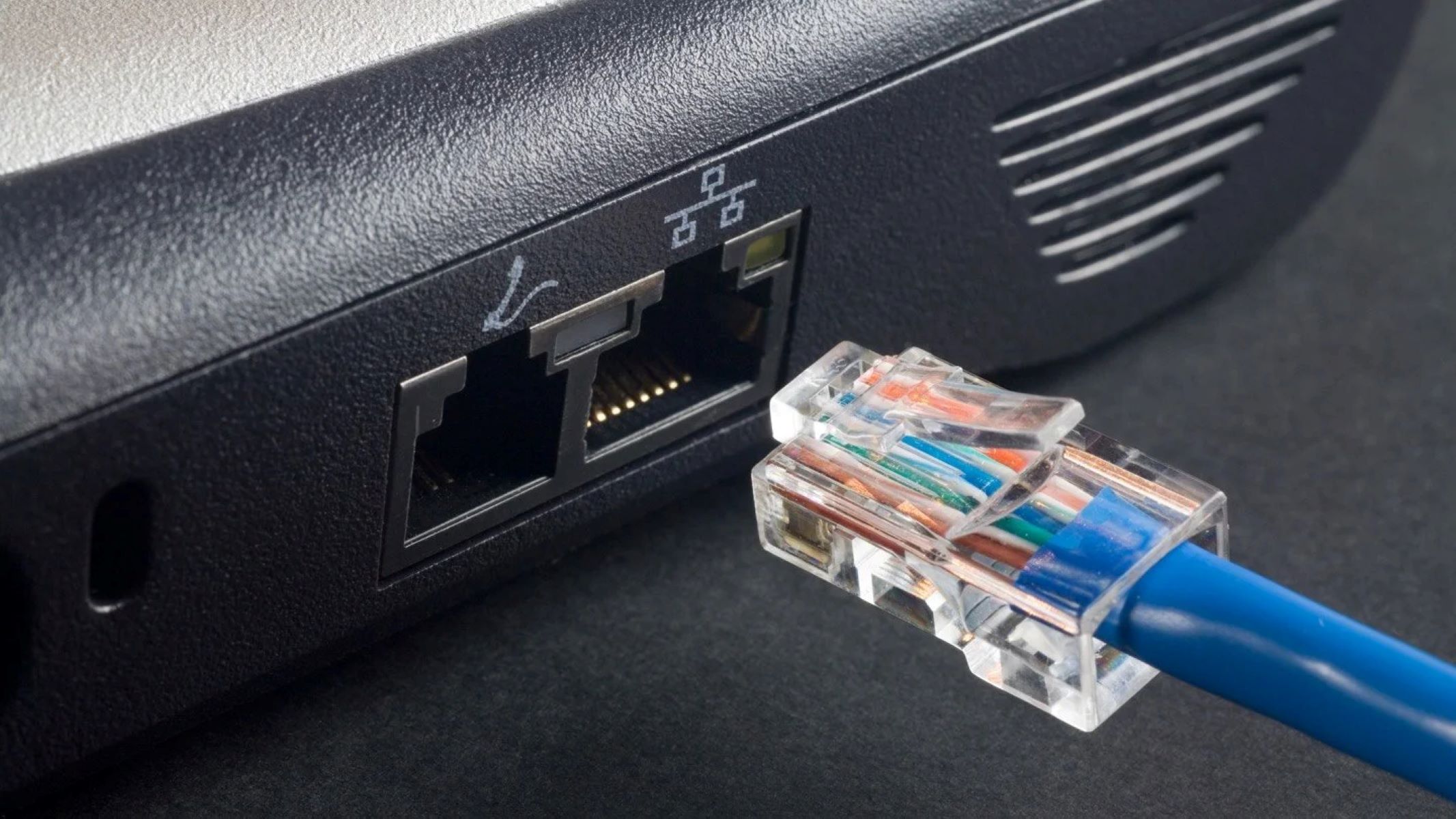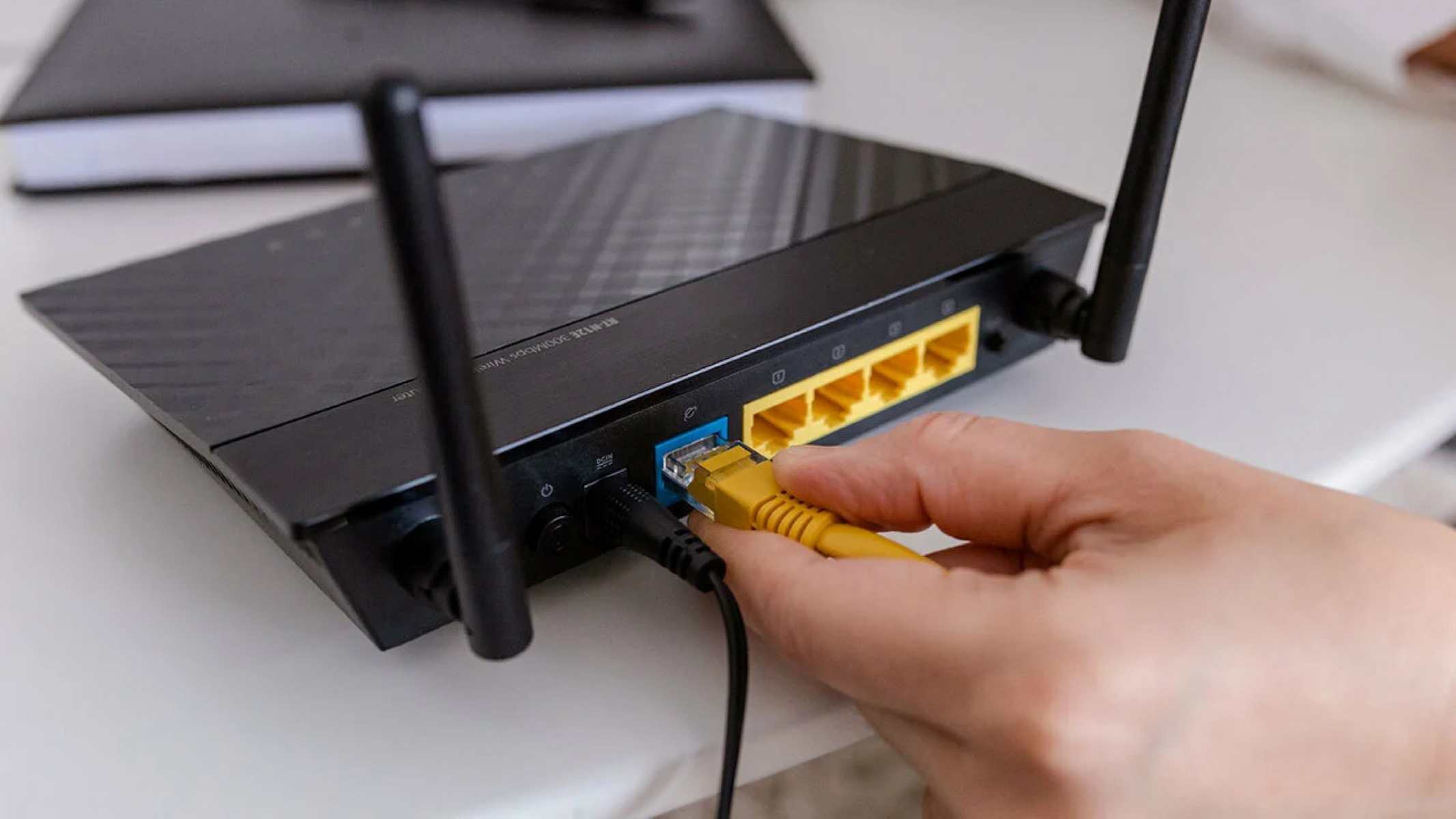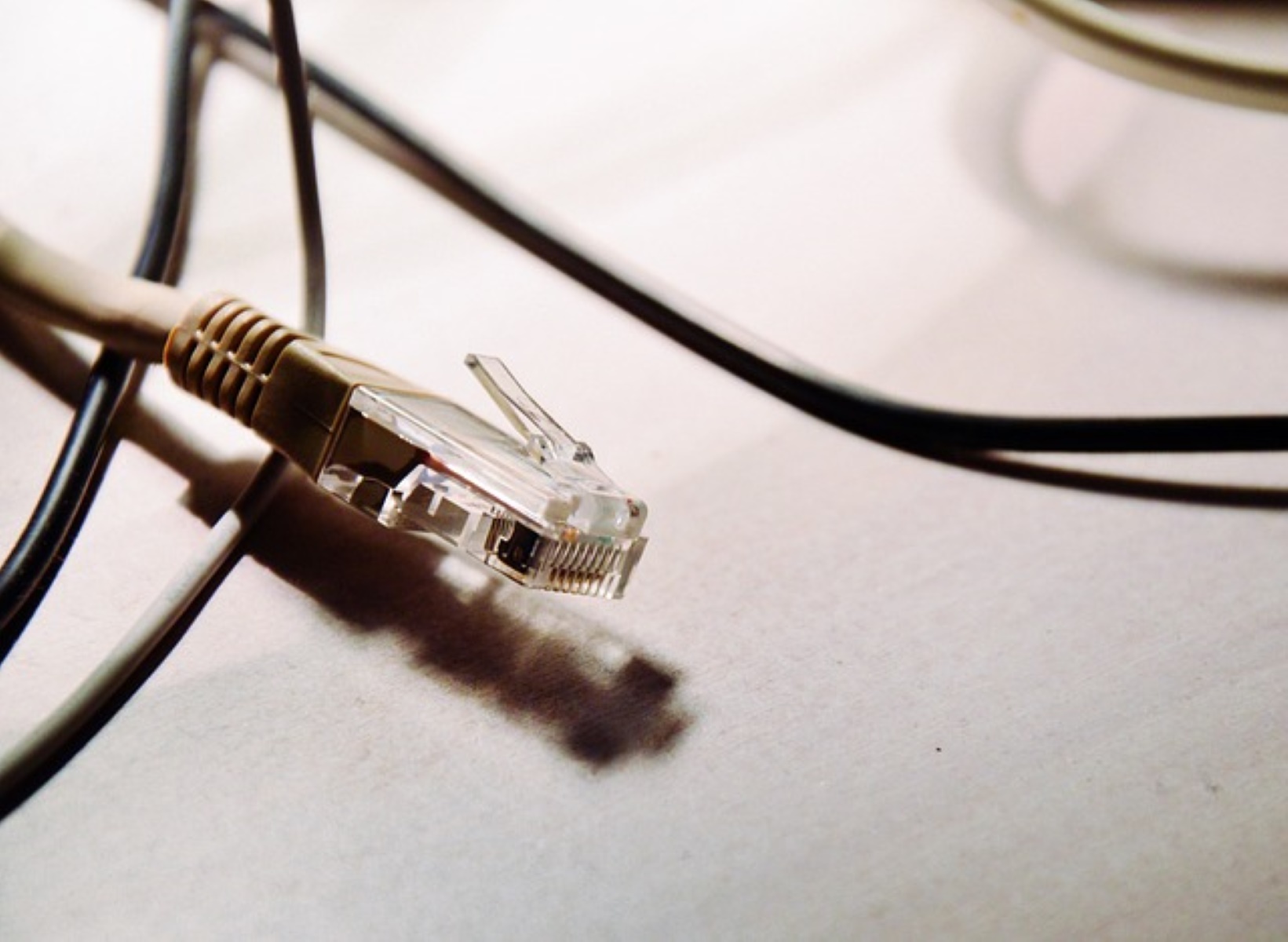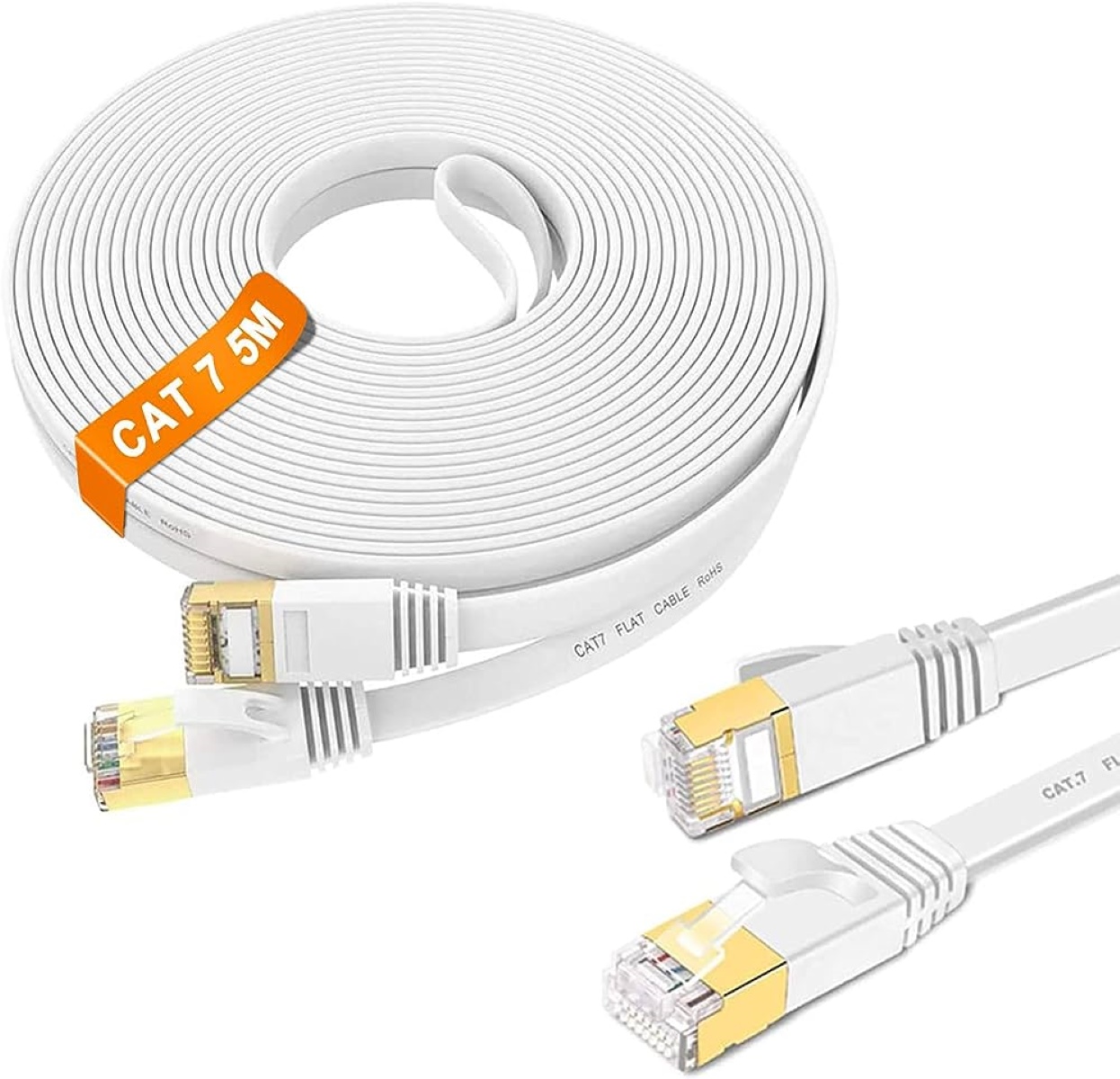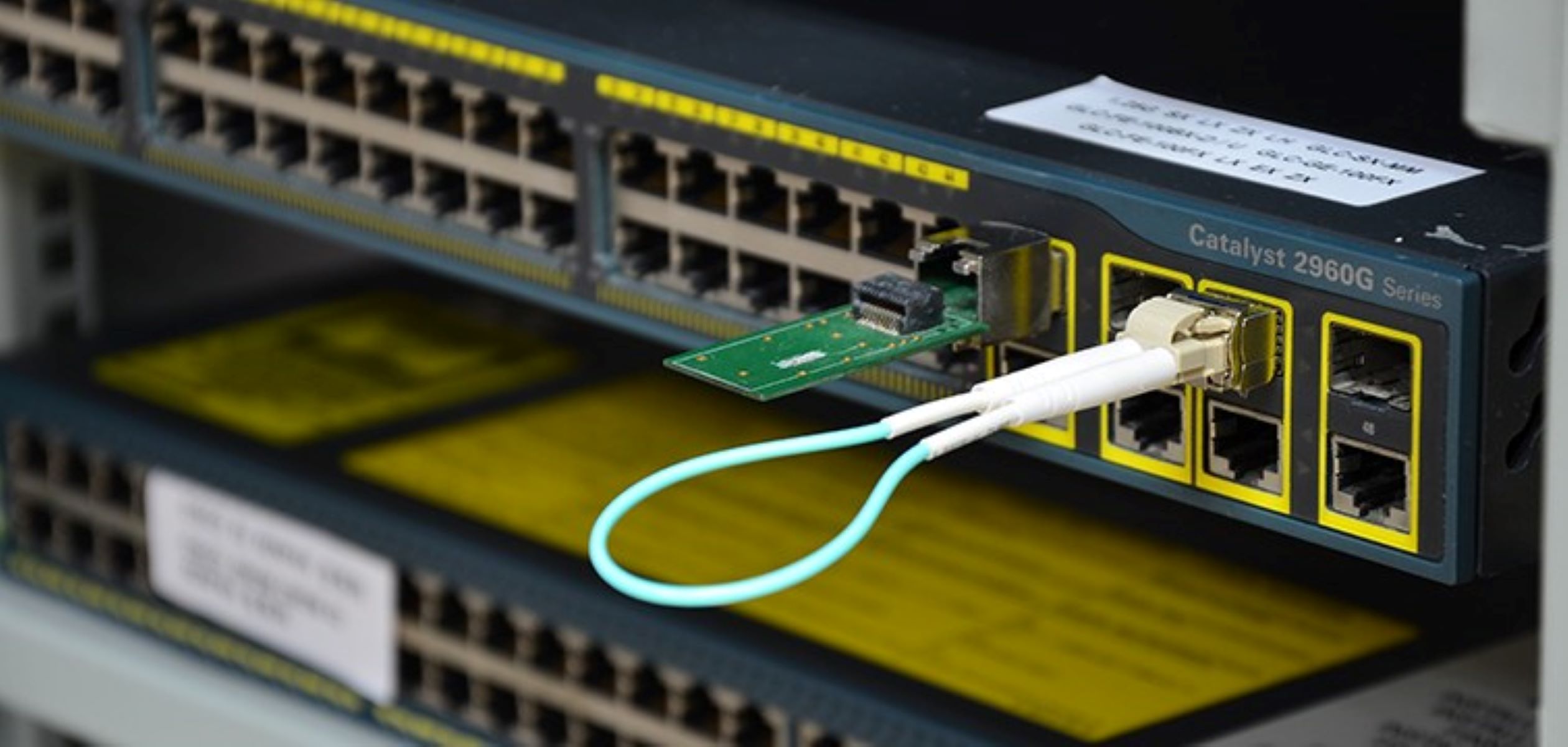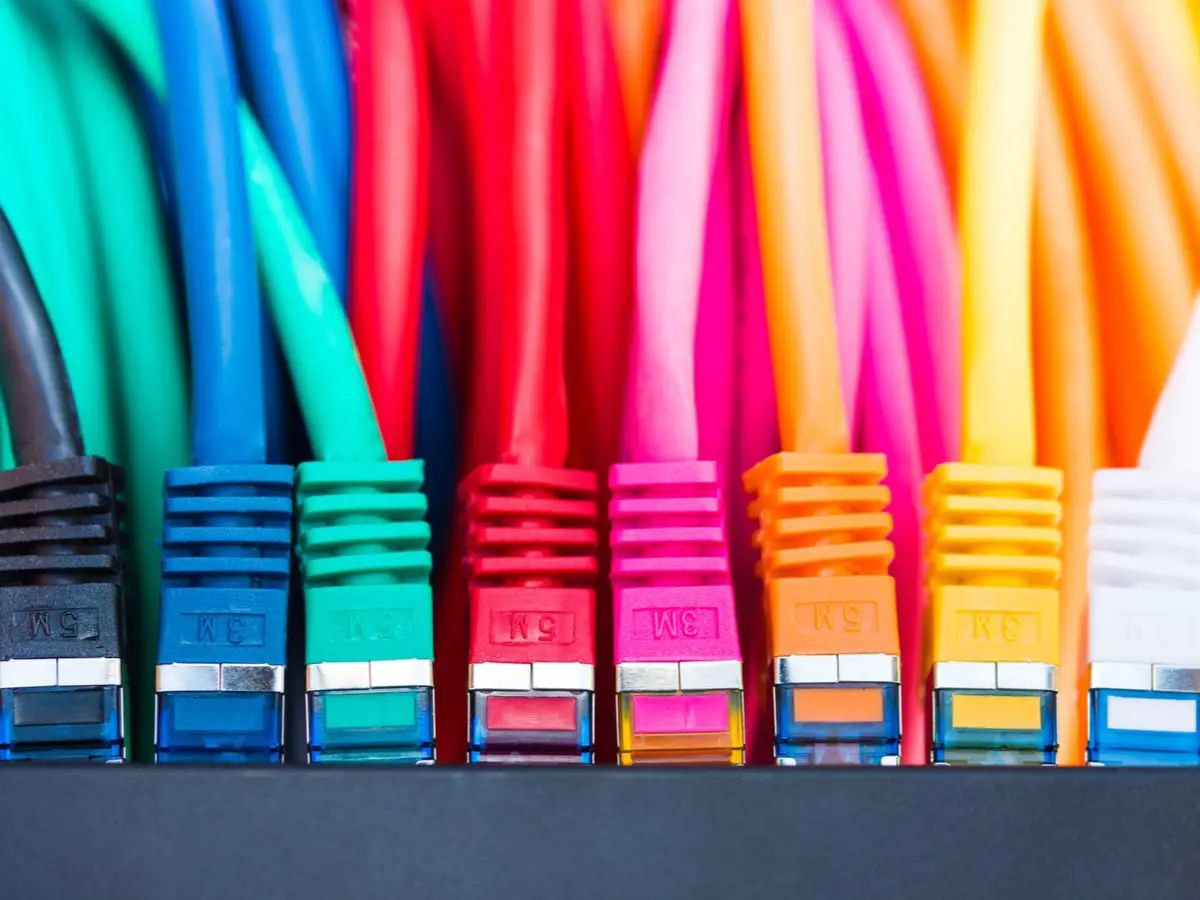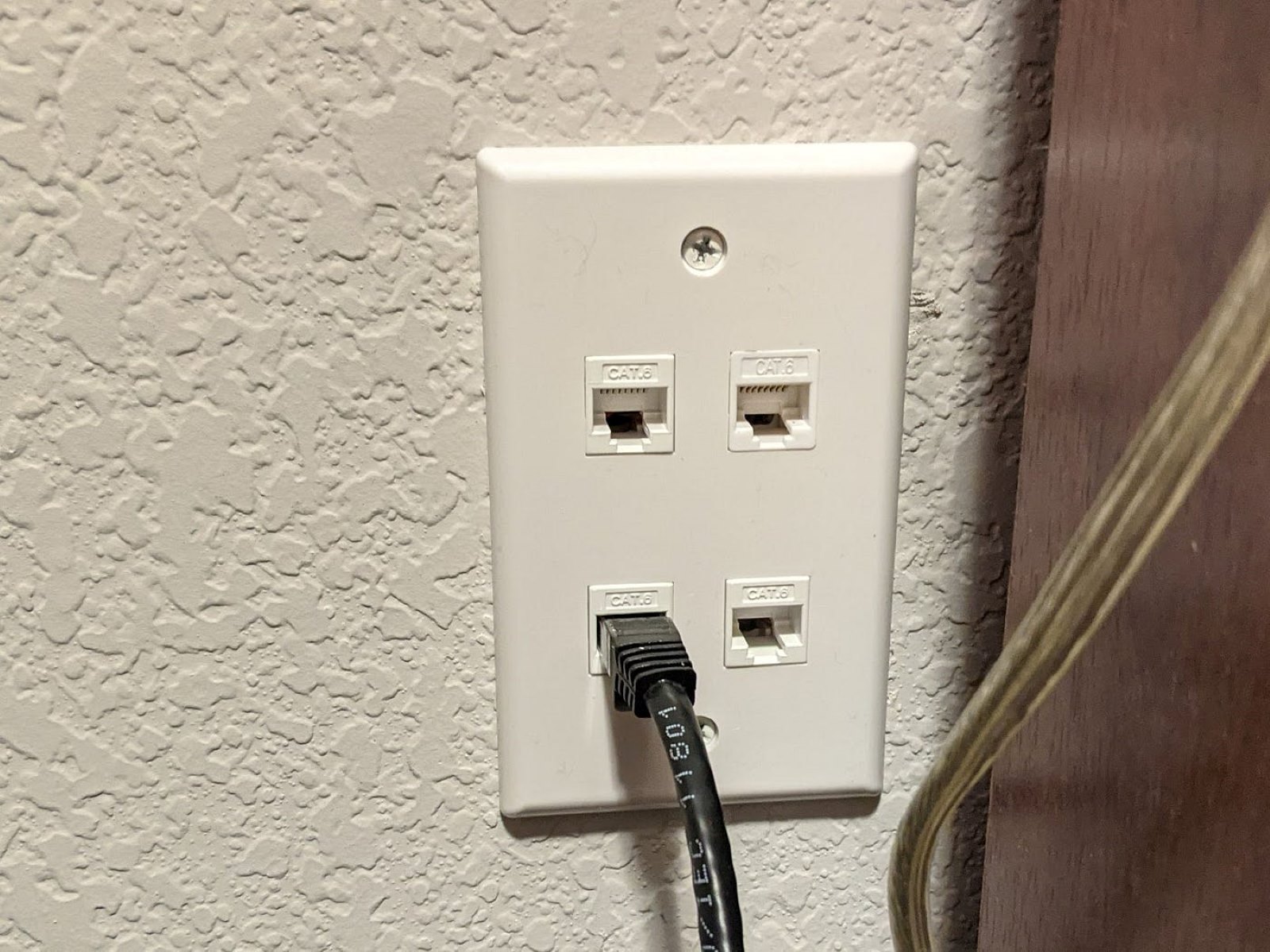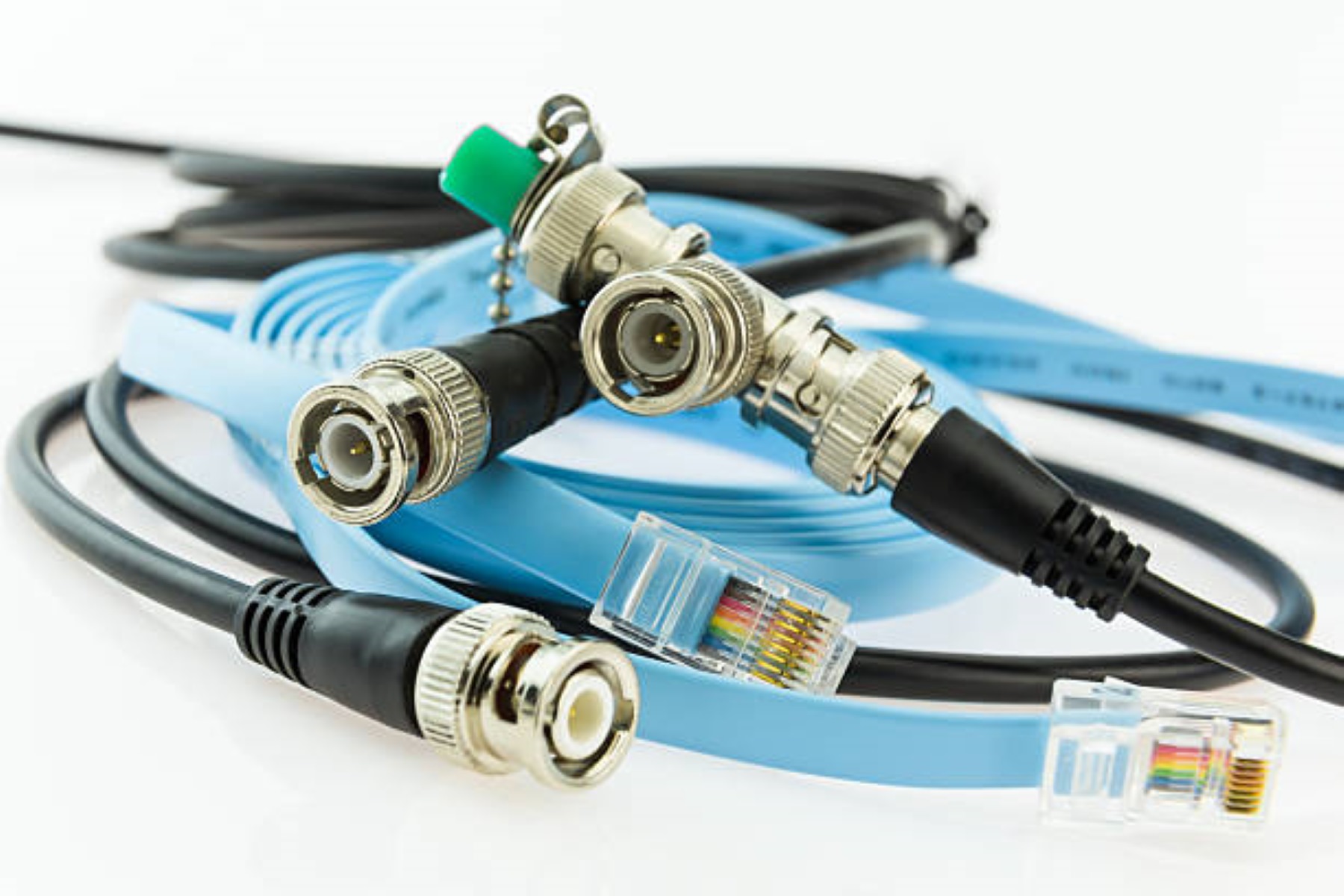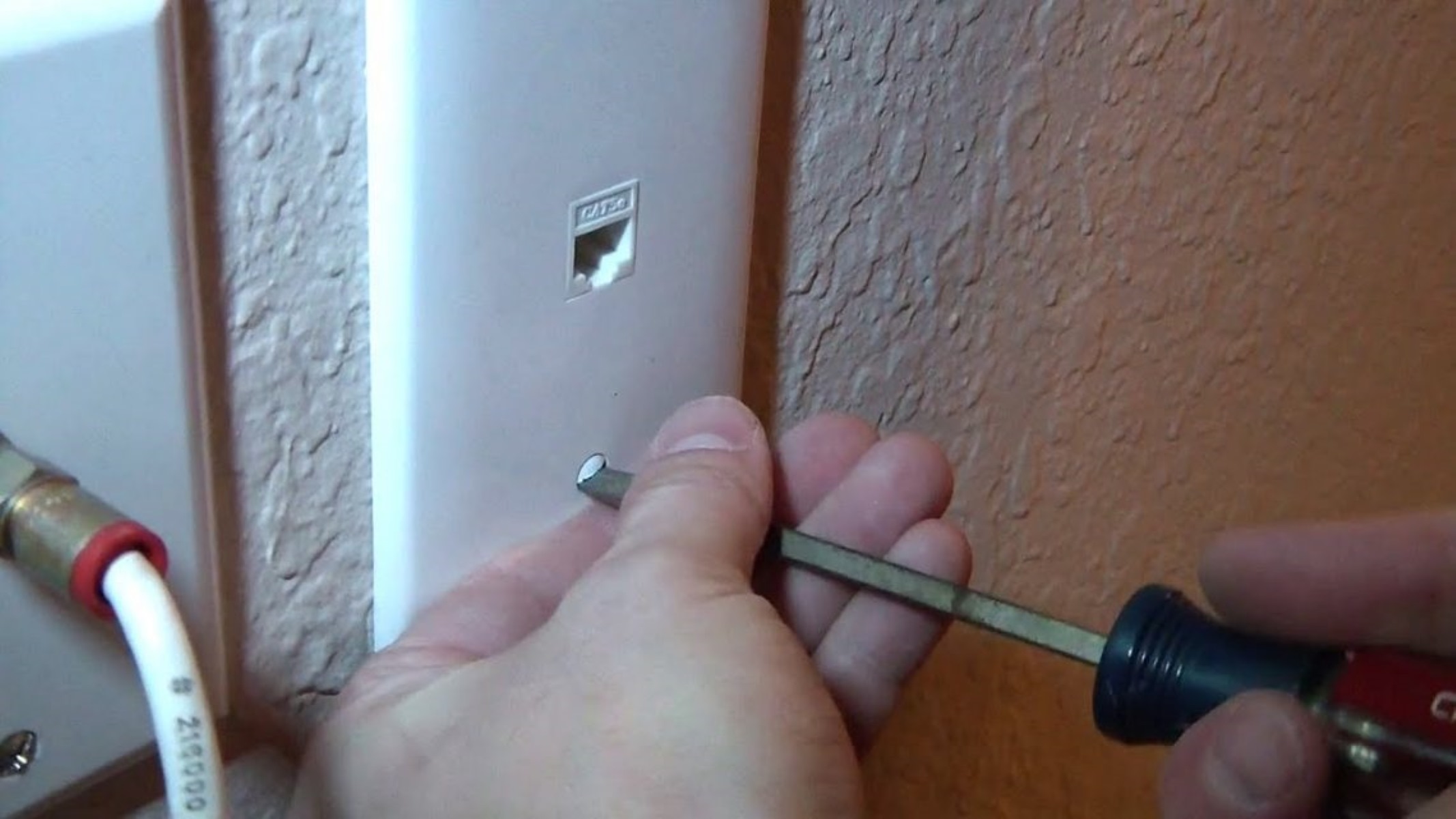Introduction
The world we live in today is increasingly interconnected, with technology permeating every aspect of our lives. From smartphones and smart homes to streaming services and online gaming, staying connected to the internet is essential. One of the key components that enable this connectivity is an Ethernet cable.
An Ethernet cable is a type of networking cable commonly used to establish a wired connection between devices, allowing for the transfer of data at high speeds. Whether it’s your computer, gaming console, or smart TV, Ethernet cables provide a reliable and stable connection that ensures smooth data transfer and minimal latency.
In the world of wireless connectivity, you might be wondering if Ethernet cables are still necessary. The truth is, while wireless technology has certainly advanced over the years, Ethernet cables continue to play a crucial role in providing a fast and secure internet connection. They offer several advantages over wireless connections, including faster speeds, greater reliability, and lower latency.
In this article, we will explore the different types of Ethernet cables, including their specifications, advantages, and use cases. We will also discuss Ethernet cable connectors and provide tips on how to choose the right cable for your needs. By the end of this article, you will have a better understanding of Ethernet cables and their importance in today’s digital age.
What Is an Ethernet Cable?
An Ethernet cable is a type of networking cable that is commonly used to connect devices to a local area network (LAN) or the internet. It is designed to carry electronic signals, allowing for data transfer between devices at high speeds.
The Ethernet cable is named after the Ethernet technology, which is a widely used standard for creating local area networks. Developed in the 1970s by Xerox Corporation, Ethernet has evolved over the years and remains the most common method of wired networking today.
Ethernet cables are typically made up of four twisted pairs of copper wires, which are enclosed in a plastic or rubber outer sheath. These pairs of wires are twisted together to reduce interference and improve signal quality. The cables are available in different categories, each with its own specifications and capabilities.
When you connect your device, such as a computer or gaming console, to a router or modem using an Ethernet cable, it establishes a direct and reliable connection. This is in contrast to a wireless connection, which relies on radio waves to transmit data and can be susceptible to interference or signal loss.
Ethernet cables are capable of carrying data at various speeds, depending on their category and specifications. They can support speeds ranging from 10 Mbps (megabits per second) to 10 Gbps (gigabits per second) and beyond. The higher the category of the cable, the faster the data transfer speeds it can support.
In addition to their use in homes and offices, Ethernet cables are also commonly used in data centers, server rooms, and other networking environments where high-speed and reliable connections are essential. They enable the seamless transfer of data between devices and provide a stable internet connection for various applications, such as online gaming, video streaming, and file sharing.
Overall, Ethernet cables are a fundamental component of wired networking infrastructure. They provide a reliable, secure, and high-speed connection that is essential for today’s digital world. Whether you’re working from home, gaming online, or simply surfing the web, an Ethernet cable ensures that your data is transferred quickly and efficiently.
Different Types of Ethernet Cables
Ethernet cables come in various types, each designed to meet specific requirements and support different speeds and distances. The different categories of Ethernet cables include:
- Category 5 (Cat5) Ethernet Cable: Cat5 cables are one of the earliest Ethernet cable standards and are capable of transmitting data at speeds of up to 100 Mbps. They are suitable for basic networking needs and are often used in residential and small office environments.
- Category 5e (Cat5e) Ethernet Cable: Cat5e cables are an improved version of Cat5 cables and offer higher performance. They can support data transfer speeds of up to 1 Gbps and provide better protection against crosstalk and interference. Cat5e cables are widely used in both residential and commercial settings.
- Category 6 (Cat6) Ethernet Cable: Cat6 cables are designed for high-performance networks and can support speeds of up to 10 Gbps over short distances. They have stricter specifications for crosstalk and system noise, making them ideal for demanding applications such as video streaming and online gaming.
- Category 6a (Cat6a) Ethernet Cable: Cat6a cables are an enhanced version of Cat6 cables and support even higher speeds and longer distances. They can handle data transfer speeds of up to 10 Gbps over a maximum distance of 100 meters. Cat6a cables are commonly used in professional networking environments.
- Category 7 (Cat7) Ethernet Cable: Cat7 cables are designed for ultra-high-speed networks and can support data transfer rates of up to 10 Gbps or higher. They have improved shielding to minimize interference and are often used in data centers and other enterprise-level networking environments.
It’s important to note that the performance of an Ethernet cable is also influenced by other factors such as the quality of connectors, the length of the cable, and the network equipment it is connected to. Additionally, backward compatibility ensures that higher category cables can be used with devices that support lower categories.
When choosing an Ethernet cable, consider the specific needs of your network and the devices you are connecting. If you require higher speeds and better performance, consider opting for Cat6 or Cat7 cables. For more basic networking needs, Cat5e cables are often sufficient. Whatever your requirements may be, there is an Ethernet cable available to meet your needs and provide a reliable network connection.
Category 5 (Cat5) Ethernet Cable
Category 5 (Cat5) Ethernet cables are one of the earliest standardized Ethernet cable types. They are widely used for basic networking purposes and offer reliable connectivity for home and small office networks.
Cat5 cables are capable of transmitting data at speeds of up to 100 megabits per second (Mbps), making them suitable for most internet connectivity needs. They consist of four pairs of twisted copper wires, which are color-coded for easy identification and termination.
One of the main advantages of Cat5 cables is their affordability. They are relatively inexpensive and readily available, making them a popular choice for residential installations and small businesses on a budget.
However, it’s important to note that Cat5 cables have certain limitations. They are not capable of supporting higher data transfer speeds required for bandwidth-intensive activities like HD video streaming and online gaming. Additionally, they have lower resistance to crosstalk and interference, which can affect the quality of the connection over long distances.
Cat5 cables are typically terminated with an RJ-45 connector, which is compatible with most networking devices and equipment. These connectors ensure a secure and reliable connection when properly installed.
While Cat5 cables may not offer the highest performance compared to newer Ethernet cable categories, they are still suitable for many everyday networking needs. They provide a stable and inexpensive solution for connecting devices such as computers, printers, and routers.
It’s worth mentioning that Cat5e cables, which are an improved version of Cat5 cables, are now more commonly used. Cat5e cables offer better performance and have stricter specifications for crosstalk and interference. They can support data transfer speeds of up to 1 gigabit per second (Gbps), making them a better choice for higher-speed networking requirements.
In summary, Cat5 Ethernet cables are a cost-effective option for basic networking needs. While they may not support the highest data transfer speeds or offer the best performance, they provide a reliable connection for most residential and small office setups. If higher speeds or better performance are required, considering upgrading to Cat5e or a higher category cable would be advisable.
Category 5e (Cat5e) Ethernet Cable
Category 5e (Cat5e) Ethernet cables are an improved version of the original Cat5 cables. They are widely used in both residential and commercial networking environments due to their enhanced performance and versatility.
Cat5e cables are capable of supporting data transfer speeds of up to 1 gigabit per second (Gbps) over a maximum distance of 100 meters. This makes them suitable for most networking applications, including internet browsing, file sharing, video streaming, and online gaming.
One of the key advantages of Cat5e cables is their ability to minimize crosstalk and electromagnetic interference (EMI). They achieve this through tighter twists in the wire pairs and better insulation. As a result, Cat5e cables offer a higher level of signal integrity and ensure a reliable and stable connection.
Another advantage of Cat5e cables is their backward compatibility with older Cat5 cables. This means that Cat5e cables can be used in existing networks or with devices that only support Cat5 cables without any issues. This makes upgrading to Cat5e a seamless process.
Cat5e cables are typically terminated with an RJ-45 connector, which is the standard connector used in Ethernet connections. This makes Cat5e cables compatible with a wide range of devices, including computers, routers, switches, and network adapters.
Due to their widespread use and popularity, Cat5e cables are also readily available and cost-effective. They offer a good balance between performance and affordability, making them a preferred choice for many home and small office networks.
Overall, Cat5e Ethernet cables provide an excellent solution for most networking needs. They offer improved performance compared to Cat5 cables, ensuring faster and more reliable data transfer speeds. Whether you are setting up a home network or a small office infrastructure, Cat5e cables are a reliable and cost-effective choice.
Category 6 (Cat6) Ethernet Cable
Category 6 (Cat6) Ethernet cables are designed to provide high-performance networking and faster data transfer speeds compared to Cat5 and Cat5e cables. They are widely used in various networking environments, including homes, offices, and data centers.
Cat6 cables are capable of supporting data transfer speeds of up to 10 gigabits per second (Gbps) over a maximum distance of 55 meters. For shorter distances, such as within a room or building, Cat6 cables can even support speeds of up to 100 Gbps.
One of the key features of Cat6 cables is their improved performance in reducing crosstalk and interference. They use tighter twists in the wire pairs and have stricter specifications for crosstalk compared to Cat5e cables, ensuring a higher level of signal integrity and reducing the chances of data corruption or loss.
Due to their higher performance, Cat6 cables are an ideal choice for bandwidth-intensive applications, such as streaming high-definition videos, online gaming, and large file transfers. They also provide better resistance to external interference, resulting in a more stable network connection.
In addition to faster speeds and improved performance, Cat6 cables are backwards compatible with Cat5 and Cat5e cables. This means that you can use Cat6 cables in existing network infrastructure without requiring a complete overhaul.
Cat6 cables are typically terminated with an RJ-45 connector, which is the standard connector used in Ethernet connections. This ensures compatibility with a wide range of devices and networking equipment.
While Cat6 cables offer significantly improved performance over their predecessors, they are slightly more expensive. However, the extra cost is justified by the increased speeds and reliability they provide, especially for those who require a high-performance network.
In summary, Cat6 Ethernet cables are the ideal choice for those seeking faster data transfer speeds and better performance in their networking infrastructure. Whether you are a home user with demanding internet needs or a business requiring a robust network for file sharing and video conferencing, Cat6 cables provide the necessary capabilities to meet your requirements.
Category 6a (Cat6a) Ethernet Cable
Category 6a (Cat6a) Ethernet cables are an enhanced version of Cat6 cables, offering even higher performance and capabilities. They are designed to meet the increasing demand for reliable, high-speed networking in both residential and commercial environments.
Cat6a cables have the capacity to support data transfer speeds of up to 10 gigabits per second (Gbps) over longer distances compared to Cat6 cables. They can maintain these speeds over a maximum distance of 100 meters.
One of the key advantages of Cat6a cables is their superior shielding capabilities. They have enhanced insulation and additional shielding, which reduces crosstalk and electromagnetic interference (EMI) to an even greater degree compared to Cat6 cables. This makes Cat6a cables particularly suitable for environments with high levels of electrical noise.
Due to their improved performance and shielding, Cat6a cables are perfect for demanding applications that require uninterrupted and high-speed data transmission. They are commonly used in data centers, server rooms, and other professional networking environments.
Similar to Cat6 cables, Cat6a cables are also backwards compatible with Cat5 and Cat5e cables. This ensures seamless integration with existing network infrastructure without the need for complete overhauls.
Cat6a cables are terminated with an RJ-45 connector, which is the standard connector used in Ethernet connections. This makes them compatible with a wide range of networking devices and equipment.
It’s worth noting that Cat6a cables are slightly thicker and less flexible compared to Cat6 cables due to the additional insulation and shielding. This may need to be considered when planning the cable installation, especially in tight spaces or when using conduit.
While Cat6a cables offer superior performance, it’s important to consider whether the extra capabilities they provide are necessary for your specific networking needs. If you require faster speeds and higher performance over longer distances, or if you operate in an environment with significant electrical noise, Cat6a cables are the ideal choice.
In summary, Cat6a Ethernet cables provide enhanced performance, higher speeds, and superior shielding compared to Cat6 cables. They are well-suited for professional networking environments and demanding applications that require a reliable, high-speed connection. Whether you’re setting up a data center, upgrading your office network, or simply looking for the best possible performance, Cat6a cables have you covered.
Category 7 (Cat7) Ethernet Cable
Category 7 (Cat7) Ethernet cables are designed to provide the highest performance and speeds among all Ethernet cable categories. They are specifically engineered for ultra-high-speed networking and are commonly used in enterprise-level networking environments.
Cat7 cables are capable of supporting data transfer rates of up to 10 gigabits per second (Gbps) or higher. They use shielded twisted pair (STP) construction, which provides excellent resistance to crosstalk and electromagnetic interference (EMI).
One of the key features of Cat7 cables is their individual shielding for each twisted pair. This helps to minimize interference, ensuring a more stable and reliable data transmission. This shielding, combined with the use of high-quality materials, makes Cat7 cables suitable for long distances and high-bandwidth applications.
Another notable feature of Cat7 cables is their ability to support higher frequencies than previous Ethernet cable categories. This makes them ideal for future-proofing network installations and accommodating emerging technologies that require even greater bandwidth.
Cat7 cables are terminated with GG45 or TERA connectors, which are backward-compatible with the standard RJ-45 connectors used in lower category cables. However, it’s important to note that devices and network equipment need to support Cat7 specifications to take full advantage of its capabilities.
Due to their advanced specifications and performance, Cat7 cables are commonly used in data centers, server rooms, and other environments where high-speed and reliable networking is critical. They are also suitable for professional applications that involve large-scale data transfer, such as video editing, graphic design, and high-performance computing.
It’s important to consider that while Cat7 cables offer top-of-the-line performance, they are also more expensive and less widely available compared to lower category cables. They are best suited for specific applications where speed and reliability are paramount.
In summary, Cat7 Ethernet cables are the highest category of Ethernet cables, offering unmatched performance and speeds. They are perfect for demanding networking environments that require ultra-high-speed data transmission without compromising stability and signal integrity. If you require the best performance for your network infrastructure, Cat7 cables are the ideal choice.
Ethernet Cable Connectors
Ethernet cables utilize specific connectors that enable the secure and reliable transmission of data between devices. The most common connector used in Ethernet cables is the RJ-45 (Registered Jack 45) connector.
The RJ-45 connector consists of eight pins that correspond to the eight wires in the Ethernet cable. These pins are arranged in a specific order and securely crimped onto the cable’s wires. The connector has a plastic housing that protects the pins and provides stability when connecting or disconnecting the cable.
When connecting Ethernet cables, the RJ-45 connector is inserted into an Ethernet port on a device, such as a computer, router, or switch. It forms a physical connection that allows data to be transmitted and received between the connected devices.
Another widely used type of Ethernet connector is the GG45 (GigaGate 45) connector. It is backward-compatible with the RJ-45 connector and provides additional pins that can support higher-speed transmission. The GG45 connector is often used in Cat6a and Cat7 Ethernet cables, which require more advanced connectors to achieve their full performance potential.
In addition to these connectors, there are other less common connectors used for specific purposes. One example is the TERA connector, which is also backward-compatible with the RJ-45 connector and is used in high-performance Cat7 Ethernet cables.
It’s important to ensure that the connectors are properly crimped onto the Ethernet cable to maintain a solid connection and optimal performance. Improperly crimped connectors can result in disrupted data transmission or complete connection failure.
When choosing Ethernet cables and connectors, it’s essential to match the cable category and connector type. For instance, Cat6 and Cat6a cables typically use RJ-45 or GG45 connectors, while Cat7 cables may utilize GG45 or TERA connectors.
Lastly, it is worth noting that Ethernet cables and connectors are standardized, meaning that cables and connectors from different manufacturers should be interchangeable as long as they meet the same specifications.
In summary, Ethernet cables primarily utilize RJ-45 connectors for secure and reliable data transmission. Additional connectors, such as the GG45 and TERA connectors, may be used for higher-performance Ethernet cables. It is important to ensure that the connectors are correctly crimped onto the cables and that the appropriate connector types are used for the corresponding cable categories.
Benefits of Using Ethernet Cables
Using Ethernet cables to establish a wired network connection offers several advantages over relying solely on wireless connections. Here are some of the key benefits of using Ethernet cables:
- Faster Speeds: Ethernet cables provide faster and more consistent data transfer speeds compared to wireless connections. This is especially important for bandwidth-intensive activities like HD streaming, online gaming, and large file transfers.
- Reliability: Ethernet cables offer a more stable and reliable connection compared to wireless connections, which can be susceptible to interference and signal loss. A wired connection ensures that you have a consistent and uninterrupted connection, minimizing latency and disruptions.
- Minimal Latency: Ethernet cables have lower latency compared to wireless connections. This is important for activities that require real-time communication and quick response times, such as online gaming and video conferencing.
- Security: Wired connections provide a more secure network connection compared to wireless connections, which can be vulnerable to unauthorized access. With Ethernet cables, the data is confined to the physical cable, reducing the risk of interception or unauthorized access.
- Greater Bandwidth: Ethernet cables support higher bandwidth, allowing for more devices to connect simultaneously without sacrificing performance. This is particularly advantageous in settings with multiple users or devices, such as offices or multi-user households.
- Less Interference: Ethernet cables are not affected by electrical interference or signal congestion from other devices in the same area. This results in a cleaner and more stable connection compared to wireless networks that can be affected by interference from other devices or neighboring networks.
Whether you are a gamer looking for minimal latency, a professional needing a secure and stable connection, or a home user seeking faster speeds for streaming and file sharing, Ethernet cables provide significant advantages over wireless connections. They offer a reliable and high-performance network connection that ensures a seamless and uninterrupted digital experience.
How to Choose the Right Ethernet Cable
Choosing the right Ethernet cable for your specific needs and network requirements is essential to ensure optimal performance and reliability. Here are some factors to consider when selecting an Ethernet cable:
- Speed Requirements: Determine the maximum speed you need for your network. If you require higher speeds, consider Cat6, Cat6a, or Cat7 cables, as they offer faster data transfer rates compared to Cat5e or Cat5 cables.
- Distance: Consider the maximum distance between your devices. Different cable categories have varying distance limitations. Ensure that the cable you choose can reach the necessary distance without sacrificing performance.
- Shielding: If your environment is prone to electromagnetic interference (EMI) or crosstalk, consider shielded cables like STP (Shielded Twisted Pair) or SSTP (Screened Shielded Twisted Pair). These cables provide better protection against interference.
- Current Standards: Ensure that the cable meets the current Ethernet standards required by your devices and network equipment. Look for cables with the appropriate certification or compliance labels, such as Cat6, Cat6a, or Cat7, to ensure compatibility and performance.
- Future-Proofing: Consider future network expansion or technology advancements. Investing in higher category cables, such as Cat6a or Cat7, can provide more bandwidth and support upcoming technologies without the need for cable upgrades.
- Connector Compatibility: Ensure that the Ethernet cable connector matches the connectors on your devices and network equipment. RJ-45 connectors are typically the standard, but higher category cables may require specific connectors like GG45 or TERA.
- Budget: Consider your budget when selecting an Ethernet cable. Higher category cables generally offer better performance but come at a higher cost. Balance your needs and budget to make the most suitable choice.
By considering these factors, you can choose the right Ethernet cable that matches your specific requirements. Whether it’s for a home network, office setup, or demanding professional applications, selecting the appropriate cable will ensure an efficient and reliable network connection.
Conclusion
Ethernet cables play a crucial role in establishing wired connections and providing fast, reliable, and secure network connectivity. Whether you’re setting up a home network, equipping an office infrastructure, or working in a professional networking environment, choosing the right Ethernet cable is essential for optimal performance.
With various categories available, such as Cat5, Cat5e, Cat6, Cat6a, and Cat7, you can select the cable that best suits your speed requirements, distance limitations, and shielding needs. Cat5e cables are a popular choice for most residential and small office applications, offering a cost-effective solution with speeds of up to 1 Gbps.
For higher speeds or specialized networking environments, Cat6, Cat6a, or Cat7 cables deliver higher performance and greater bandwidth capacities. They are designed to support faster data transfer rates and provide superior protection against interference, making them ideal for bandwidth-intensive activities and demanding applications.
In addition to choosing the right cable category, considering factors such as connector compatibility, future-proofing, and budget will ensure a successful network setup. RJ-45 connectors are the standard for Ethernet cables, but higher category cables may require specific connectors like GG45 or TERA.
Overall, Ethernet cables offer several advantages over wireless connections, including faster speeds, greater reliability, minimal latency, enhanced security, and decreased interference. By investing in the right Ethernet cable, you can enjoy a stable and efficient network connection for various applications, ranging from everyday internet browsing to high-demand activities like online gaming and HD video streaming.
So, whether you’re connecting your computer, gaming console, smart TV, or other devices, remember the importance of Ethernet cables in providing the foundation for a seamless and high-performing network. Choose the right Ethernet cable to unlock the full potential of your network and enjoy a seamless and reliable online experience.







